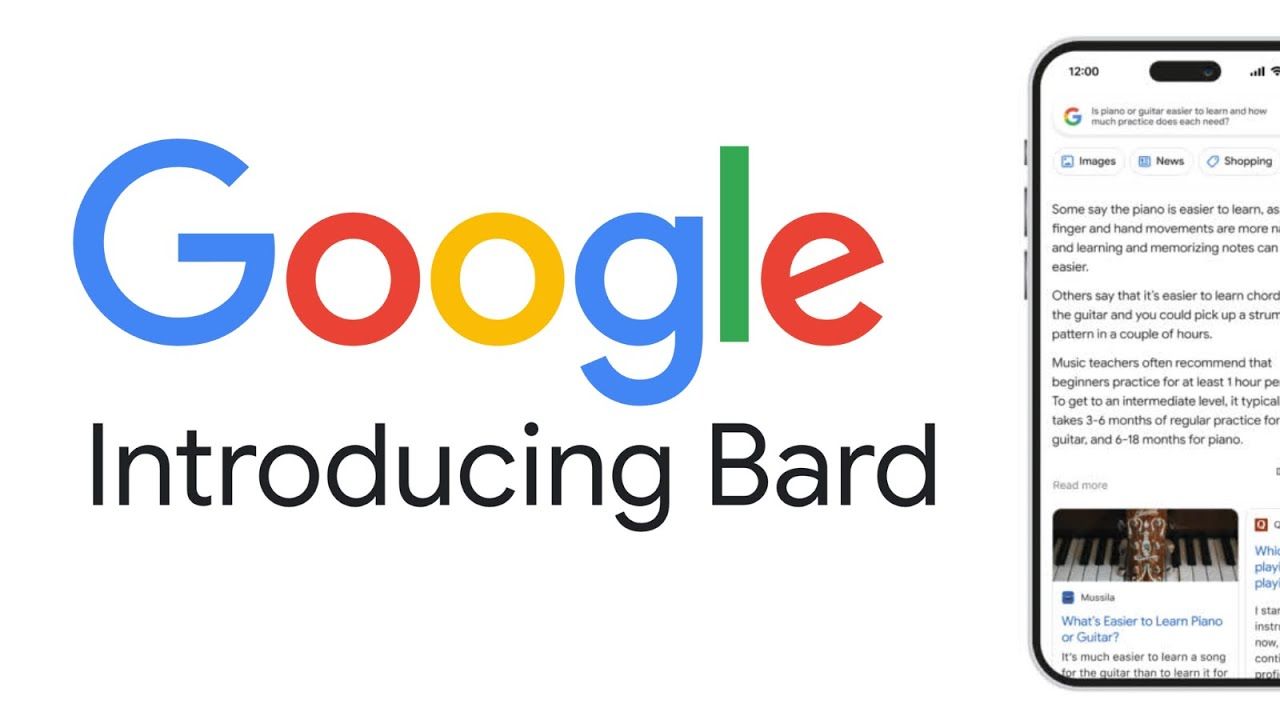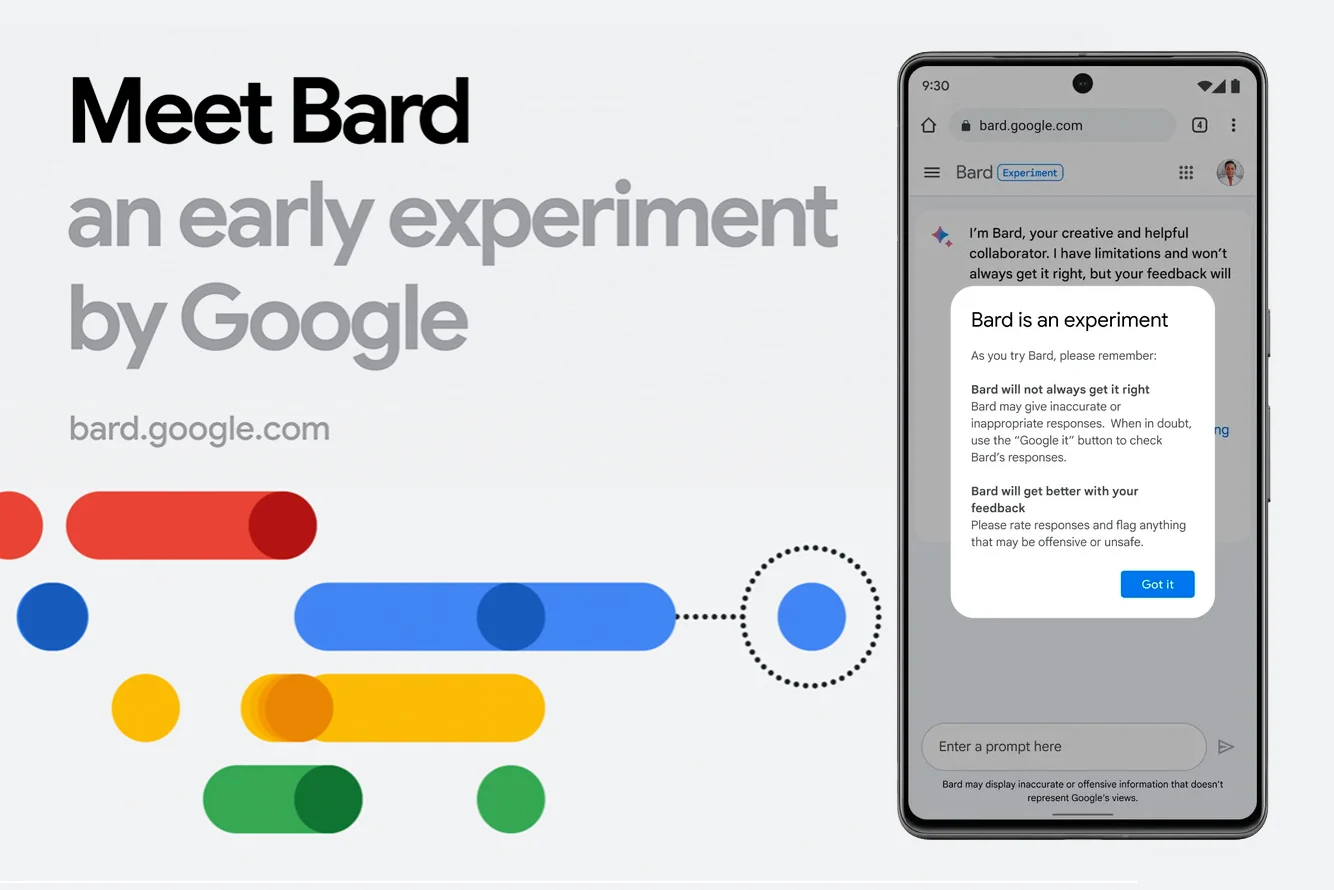Google Bard is here! Explore Everything about this Google Product

A new inspiration has emerged from the digital world: Google Bard.
In a world where algorithms dance with creativity and words build a complex tapestry of expression, words play an essential role.
Google Bard encourages us to participate in a lyrical voyage, unlike anything we've ever experienced, just as the ancient bards enthralled audiences with their melodious lines.
This blog delves into the fascinating world of Google Bard, examining its history, distinctive features, and the amazing opportunities it offers to computer enthusiasts and poets alike. So gather your ideas because we're about to reveal all there is to know about Google Bard's literary prowess in this digital symphony. Let the verses unfold!
What is Google Bard?

Take a look at Google Bard here
On February 6, 2023, Google Bard was originally unveiled. It was later made available to a select group of Americans and Britons. Google has been careful in releasing its product as it works to control the unforeseen behavior this type of technology can exhibit.
But it was revealed during the Google I/O 2023 Keynote that Google Bard is now available in more than 180 countries and territories, with more on the way.
Google also has plans to expand the availability of Bard, but it did not say where or when. Google is launching Bard as a service that runs apart from its web search engine and other products, and it has not yet launched a standalone app for the chatbot.
It is based on Google's Language Model for Dialogue Applications (LaMDA), which has been trained on trillions of words and is comparable to OpenAI's ChatGPT. Bard is made to gather data from the internet and give users new, excellent responses. In the next weeks, it will be made available to the general public after undergoing testing with a small number of "trusted testers".
Bard is an interactive way to explore topics rather than a search engine. It aims to combine the depth of human knowledge with the strength, humor, and originality of Google's extensive language models. Bard is able to compare things, arrange activities, and respond to complicated queries.
Bard is anticipated to support 40 languages shortly and can also function as a poet, a rudimentary mathematician, and a good conversationalist.
How does Google Bard differ from other AI chatbots like ChatGPT?

Google Bard and other AI chatbots like ChatGPT differ mostly in terms of their underlying data sources. While ChatGPT is trained on a predefined set of data that hasn't been changed since 2021, Bard is trained on an "infiniset” data selected to improve its discourse and has real-time access to the internet.
The competitor chatbot, Bard, doesn't always react to inquiries in the same way as ChatGPT since it is powered by a different language model and draws its information from various sources.
Bard's LaMDA is incorporated with Google's search engine and may provide direct links to websites when required. As a result, it always has the most recent responses and can draw responses from the internet.
However, ChatGPT outperformed both the common deep learning approaches and the conventional program repair approaches in terms of performance. It has knowledge base restrictions and is capable of recalling previous discussions.
Also see: New releases in the market from MiniGPT-4 to LLaMA
Applications for Google BARD

A chatbot using AI at its core, Google Bard has a variety of uses.
- Bard can use Google Lens to analyze images, identify things in the image, and create clever descriptions. It may be used to collaborate with others and has coding skills.
- Bard is now being evaluated by a select number of "trusted testers" and will be made available to the general public soon. Soon, it should support 40 different languages.
- Bard can be used in the classroom to teach students about poetry and literature, to give each student individualized tutoring and guidance, to assist them with their assignments, to provide comments on their writing, and to assist them in studying for exams.
- Bard can be used to develop persuasive and captivating content in marketing.
- Bard is perfect for people who depend on Google services like Gmail and Maps because it can also be used to supplement Google Search.
- To provide users with a more thorough and customized experience, Google is also thinking about incorporating Bard technology into comparable products, including Google Assistant.
- In the medical industry, Bard can be used to offer patients who may be dealing with anxiety, depression, or other mental health problems mental health help. They can provide coping mechanisms, mindfulness training, and other beneficial tools to help patients on their path to better mental health. Additionally, Google Bard's generative AI system has the power to transform healthcare by enabling patient interaction with the AI platform and feedback sharing as appropriate. The most obvious use is that patients may begin to receive more individualized care and therapy if models are properly trained and tested.
In short, it can be used to organize activities, evaluate products, respond to challenging questions, write poetry, perform rudimentary mathematics, and hold a reasonable conversation.
How can Google Bard be integrated with other Google services and products?
Google Drive, Docs, Gmail, Maps, and other Google services and products can all be integrated with Google Bard.
With the support of numerous partners, such as Kayak, OpenTable, ZipRecruiter, Instacart, Wolfram, and Khan Academy, Google is trying to integrate Bard with useful Google tools. Both coding and collaboration with others are possible with Bard.
Google is giving fresh options for users to work with Bard and is outlining its future plans. Bard may use Google Lens to analyze images, identify things in the image, and create clever subtitles. Recent leadership changes at Google point to the potential inclusion of Bard in the next Google Assistant products.
As of right now, Bard is only being tested with a select set of "trusted testers," but Google has promised that in the upcoming weeks, it will be made available to everyone.
How Google Bard can help in the Model training process?
By providing a prediction engine that can be used to generate text and dialogue, Google Bard can aid in the training of models.
A lightweight and optimized version of LaMDA serves as the foundation for Bard's large language model (LLM), which will be replaced over time by newer, more powerful models. Bard can be used to generate content, come up with ideas, and even write, fix, or clarify code.
Additionally, Google is presenting new ways for users to work with Bard, and it is outlining its goal for incorporating Google Docs, Drive, Gmail, Maps, and other features directly into the Bard experience. Businesses and developers can use Bard to supplement their own models and raise the caliber of their forecasts by utilizing Google's AI algorithms.
Fasten your data annotation process with Google's Bard and Labellerr
Your data annotation process can be accelerated and streamlined with the help of Google Bard and Labellerr.
With its sophisticated language production capabilities, Google Bard can help generate annotations for textual data, saving data annotators time and effort. It offers a unique and effective technique to produce labeled data for many uses, including training machine learning models.
The language creation capabilities of Google Bard combined with the flexibility of Labeler's annotation tools can greatly speed up the process of annotating data. These technologies not only increase productivity but also help annotated datasets be more accurate and reliable in general.
Utilizing tools like Google Bard and Labellerr can dramatically improve data annotation procedures, which will ultimately increase model performance and have a real-world impact as AI and machine learning applications continue to grow.
Conclusion
In conclusion, Google built the novel and potent language model known as Bard. In order to produce meaningful and original poetry, it leverages the success of other AI models like GPT-3.
Google Bard has the potential to revolutionize the field of poetry and support poets, writers, and artists in their creative endeavors because of its capacity to comprehend various styles, rhymes, and emotions.
Google Bard provides a fresh and fascinating way to investigate the beauty and profundity of human expression via poetry by utilizing cutting-edge AI technology. Google Bard is undoubtedly a promising move in that regard. As the field of AI develops, we may anticipate even more exciting advances in the area of language production.
We hope you found it interesting, stay tuned to know more about such amazing technologies information!
FAQs
- What is Google Bard?
An experimental conversational AI chat service called Google Bard is created by Google. It is intended to operate similarly to ChatGPT, with the main distinction being that Google's service will obtain its data from the internet.
2. How does the Google Bard function?
A conversational AI chatbot that can produce any type of text is called Google Bard. You may ask Bard any question, and it will respond as long as it doesn't contravene its content restrictions. To communicate with people, it uses a language model as its engine. It was first propelled by Google's Language Model for Dialogue Applications (LaMDA), but it is currently propelled by Google's most sophisticated large language model (LLM), PaLM 2.
3. What NLP activities can Google Bard perform?
You can utilize Google Bard for a variety of NLP activities, such as answering queries, coding, resolving math issues, and assisting with writing requirements.
4. What languages does Google Bard support?
The three languages that Google Bard is now accessible in are US English, Japanese, and Korean. It is accessible in more than 180 nations and territories, and Google intends to progressively develop there in a method that complies with national laws and their AI principles.
5. How to use Google Bard?
You can register at bard.google.com and input your Gmail address to utilize Google Bard. The AI will then provide a conversational answer to any question or request you type into a text field to begin engaging with Bard.
Book our demo with one of our product specialist
Book a Demo
